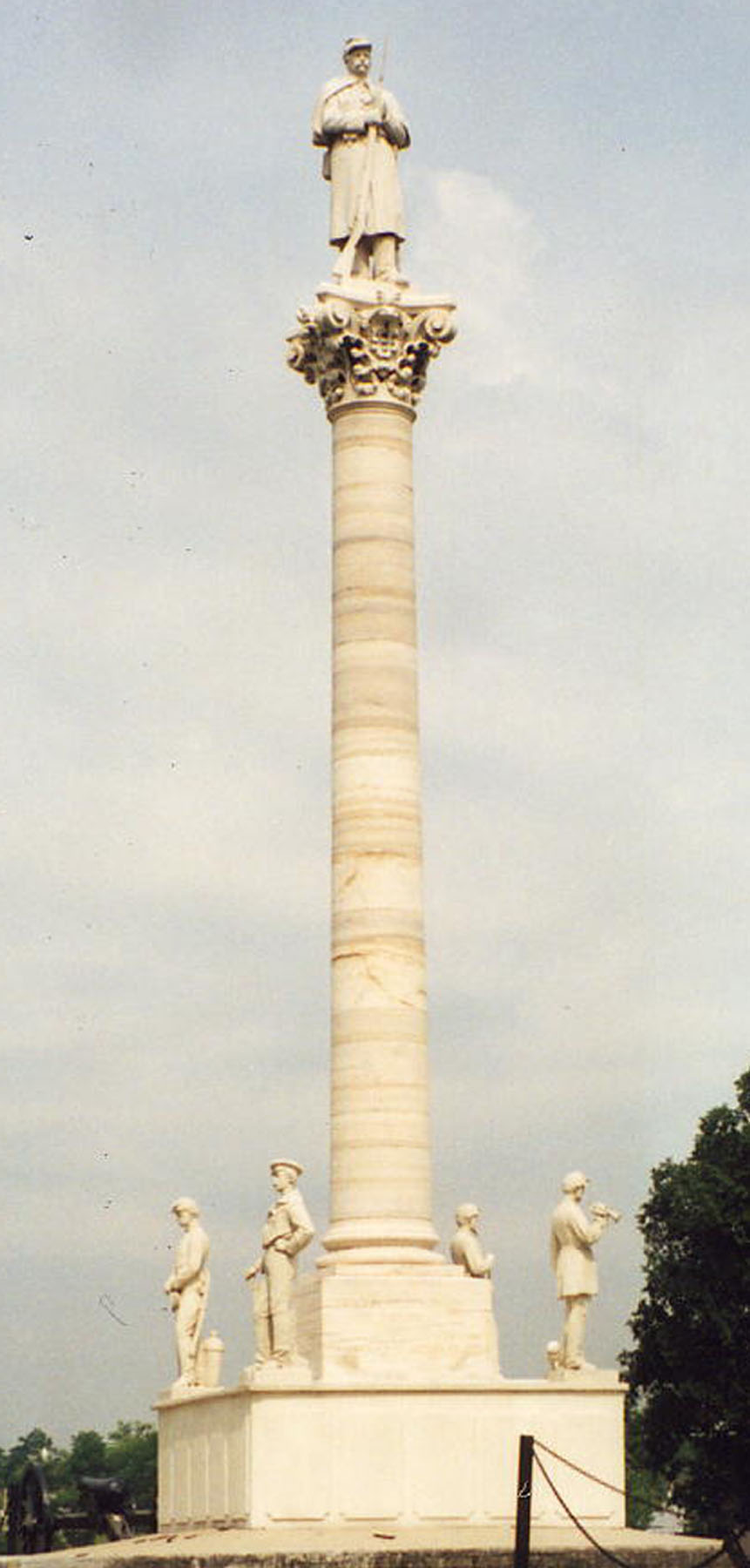|
Dayton |
Office Hours: Visitation Hours: |
|
|
Burial Space: This
cemetery has space available to accommodate casketed and cremated
remains. |
|
Directions
from nearest airport:
|
Military
Funeral Honors
The VFW Post 5018 may provide military funeral honors. They can be reached
by calling (937) 276-9252.
back to top
Dayton National Cemetery, located in Montgomery County, Ohio, was established as the permanent burial site for residents of the Central Branch of the National Asylum for Disabled Volunteer Soldiers in 1867. It is one of 11 federal cemeteries affiliated with the system of National Homes for Disabled Volunteer Soldiers. Management of these facilities was transferred from the U.S. Army/National Home system to the newly created Veterans Administration in 1930.
The design of the cemetery is attributed to Chaplain (and Capt.) William B. Earnshaw, who was considered to have “judgment and taste” in these matters. Earnshaw served in the Army of the Potomac and the Army of the Cumberland, from which he was named superintendent at Stones River and Nashville National Cemeteries. In September 1867, Earnshaw arrived at the Dayton Soldiers Home, as it became known, having been encouraged to seek the position by Gen. George Thomas.
The Soldiers Home cemeteries were to be “laid out and cared for, as far as practicable, in the manner prescribed for National Cemeteries.” The single-most visual cemetery construction is the lofty Soldiers’ Monument around which faceted, concentric rows of graves are arranged. Two features found here are common to many older national cemeteries. There are two ornamental 19th-century cannons located at the base of Soldiers’ Monument, and seven “Bivouac of the Dead” verse tablets.
When a death occurred here or a deceased veteran was delivered to the facility, the hospital’s Council of Administration was notified and steps taken to protect the man’s person and belongings prior to his removal to the morgue. Among the permanent improvements to the home in 1887 was the completion of a “new receiving vault” connected with the hospital, which was a “very great convenience to the institution.” Furthermore, every resident was to be buried in a “clean suit of the Home uniform.”
Standardized products were used in burials. “Class I” items used at the homes included standard-manufacture “coffin-lowering devices.” Burial caskets were “to be made of good quality, well seasoned, soft lumber; to be covered with crapine, craponette or other suitable casket cloth of similar, inexpensive grade; to be lined inside with a good quality of bleached muslin, and to be provided with the usual trimmings of white metal; dimensions to be specified.” In addition, according to National Home regulations, funerals were “conducted in accordance with military usage, the honors prescribed by the U.S. Army,” including an officiating chaplain. It was also mandatory for “a band of the branch [to] attend all funerals, unless the weather is too inclement.”
Between 1867 and the late 1880s, annual deaths in the
Central Branch crept from six up to 847, a number that, according to Harper’s
magazine, was “remarkably low, considering the age and debility
of the subjects.” Annual deaths at Dayton by the end of the 19th
century topped out at nearly 1,400. Between 1900 and 1930 (the year the
Veterans Administration took over management), veteran deaths peaked between
1907 and 1918 (ranging from 2,331 to 2,352), with the highest single-year
mortality in 1916 with 2,583 deaths. By this time, the small number of
War of 1812 and Mexican War veterans had long since passed away. The youngest
Civil War veterans were approaching their late sixties, and younger Spanish-American
and World War I veterans would have taken up residency.
Monuments
and Memorials
The
Dayton Soldiers’ Monument dominates the national cemetery from atop
a mound at the center of the landscape. The cornerstone was laid in 1873,
and it was completed in 1877. This dramatic structure is composed of a
30-foot marble column on a granite base with an ornamental cap and soldier
posed at parade rest. At the corners of the base stand four figures representing
the Infantry, Cavalry, Artillery and Navy. The column is especially significant
for having been designed by Benjamin Henry Latrobe and used on his Bank
of the United States building in Philadelphia. Latrobe worked on the White
House and U.S. Capitol, and is credited with introducing Greek Revival
architecture to America. President Rutherford B. Hayes delivered the dedication
address on Sept. 12, 1877, to a crowd of about 22,000. Two ornamental
artillery cannons are located at the base of Soldiers’ Monument.
The “Memorial to 33 soldiers of the War of 1812 Buried in this Cemetery…”
is a bronze plaque affixed to a tall boulder. The text continues: “Honoring
Josephine C. Diefenbach state president 1915-1932. Erected by the Ohio
Society United States Daughters of 1812 on the anniversary of Perry’s
Victory–September 10, 1936.”
back to top
Cemetery policies are conspicuously posted and readily visible to the public.
Floral arrangements accompanying the casket or urn at the time of burial will be placed on the completed grave. Natural cut flowers may be placed on graves at any time of the year. They will be removed when they become unsightly or when it becomes necessary to facilitate cemetery operations such as mowing.
Artificial flowers and potted plants will be permitted on graves during periods when their presence will not interfere with grounds maintenance. As a general rule, artificial flowers and potted plants will be allowed on graves for a period extending 10 days before through 10 days after Easter Sunday and Memorial Day.
Christmas wreaths, grave blankets and other seasonal adornments may be placed on graves from Dec. 1 through Jan. 20. They may not be secured to headstones or markers.
Permanent plantings, statues, vigil lights, breakable objects and similar items are not permitted on the graves. The Department of Veterans Affairs does not permit adornments that are considered offensive, inconsistent with the dignity of the cemetery or considered hazardous to cemetery personnel. For example, items incorporating beads or wires may become entangled in mowers or other equipment and cause injury.
Permanent items removed
from graves will be placed in an inconspicuous holding area for one month
prior to disposal. Decorative items removed from graves remain the property
of the donor but are under the custodianship of the cemetery. If not retrieved
by the donor, they are then governed by the rules for disposal of federal
property.
back to top
VA Home Page /
Site Map /
Facilities Locator /
Privacy & Security Statement /
Disclaimer
Freedom of Information Act /
Contact the VA /
Accessibility Notice
Last Update: April 21, 2004


